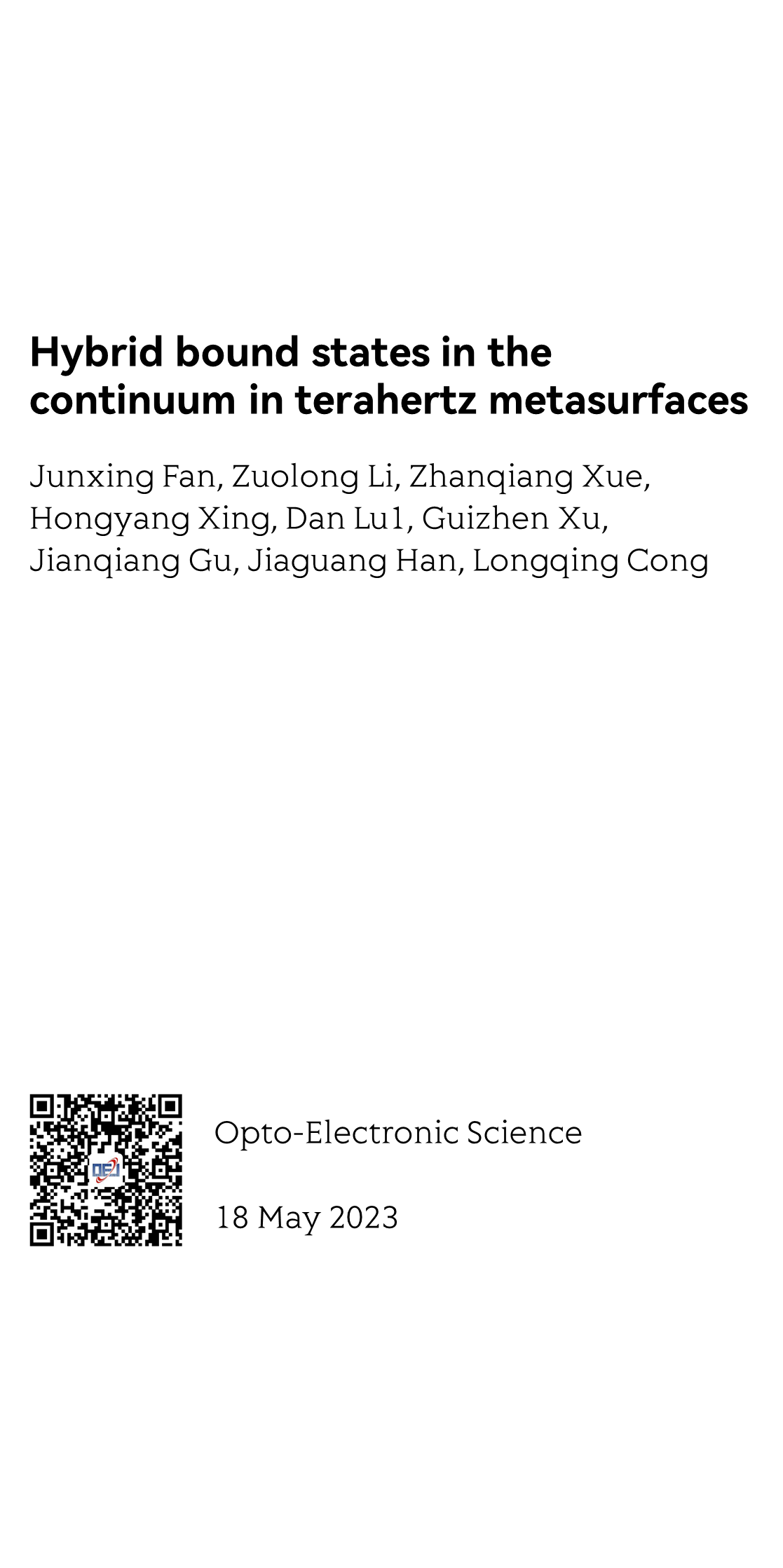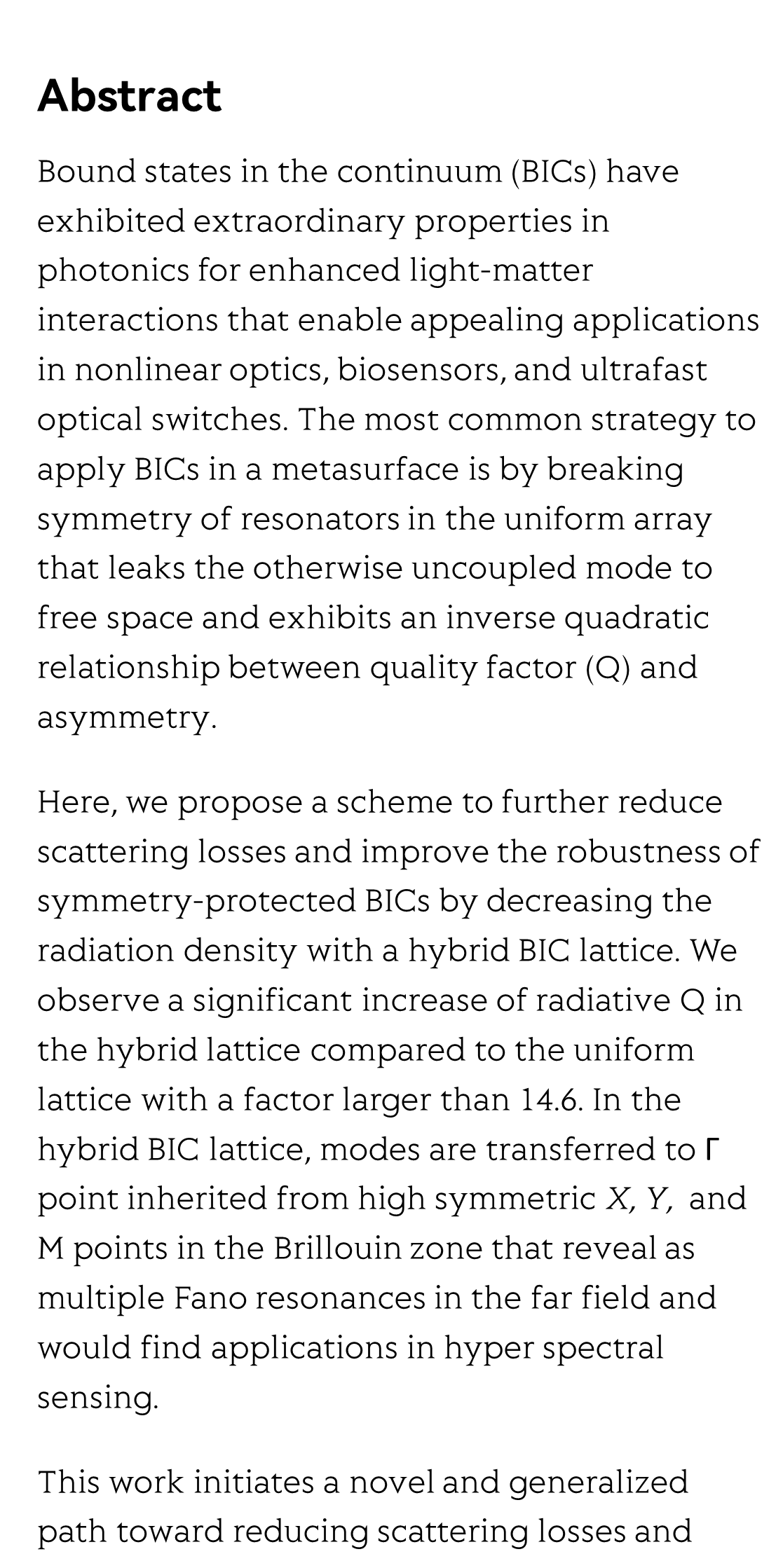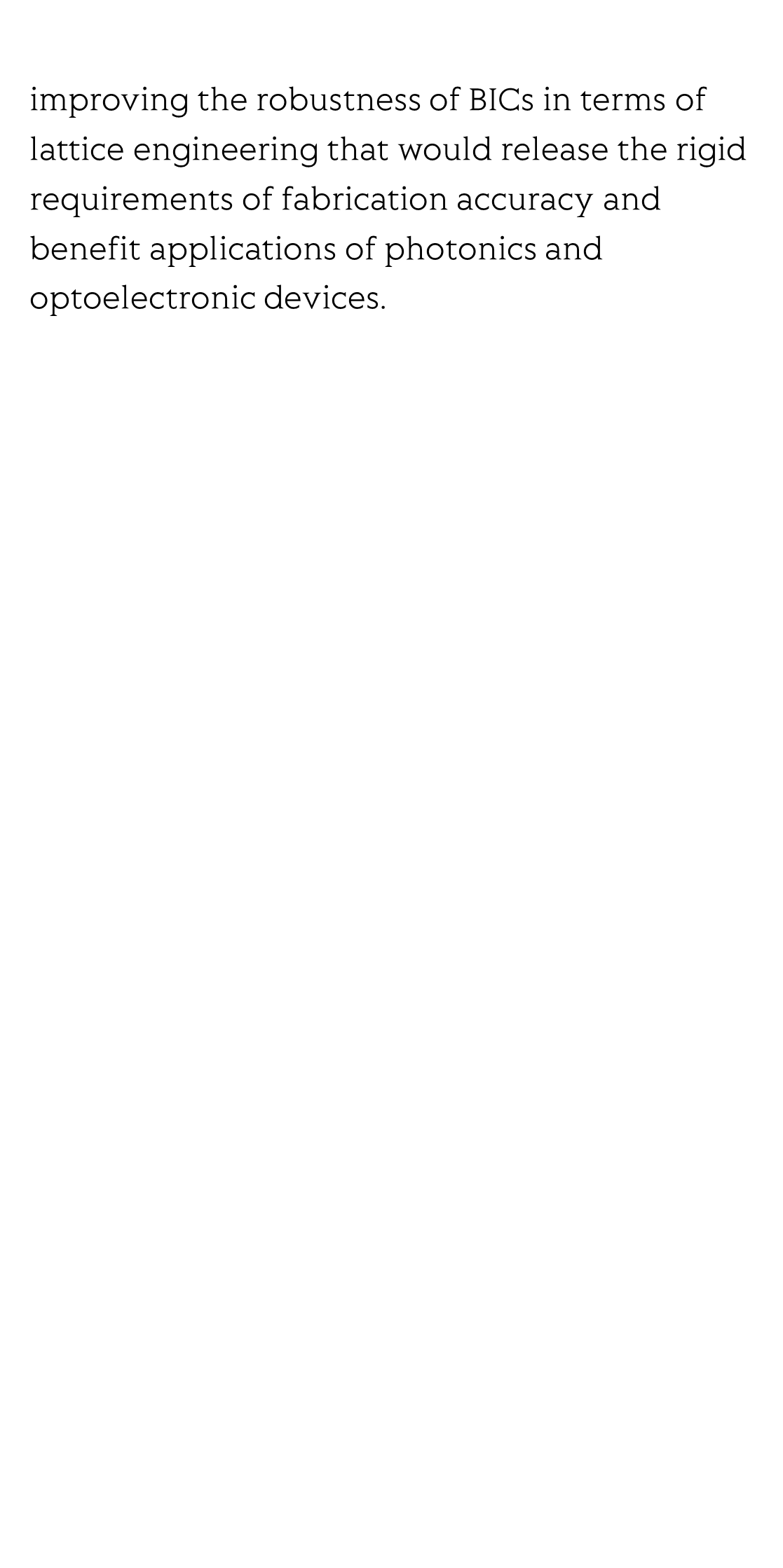(Peer-Reviewed) Hybrid bound states in the continuum in terahertz metasurfaces
Junxing Fan 凡俊兴 ¹, Zuolong Li 李祚龙 ², Zhanqiang Xue 薛占强 ¹, Hongyang Xing 邢宏阳 ¹, Dan Lu 鲁丹 ¹, Guizhen Xu 许桂珍 ¹, Jianqiang Gu 谷建强 ², Jiaguang Han 韩家广 ² ³, Longqing Cong 丛龙庆 ¹
¹ Department of Electrical and Electronic Engineering, Southern University of Science and Technology, Shenzhen 518055, China
中国 深圳 南方科技大学电子与电气工程系
² Center for Terahertz Waves and College of Precision Instrument and Optoelectronics Engineering, Tianjin University, Tianjin 300072, China
中国 天津 天津大学精密仪器与光电子工程学院 太赫兹研究中心
³ Guangxi Key Laboratory of Optoelectronic Information Processing, School of Optoelectronic Engineering, Guilin University of Electronic Technology, Guilin 541004, China
中国 桂林 桂林电子科技大学光电工程学院 广西光电信息处理重点实验室
Opto-Electronic Science, 2023-05-18
Abstract
Bound states in the continuum (BICs) have exhibited extraordinary properties in photonics for enhanced light-matter interactions that enable appealing applications in nonlinear optics, biosensors, and ultrafast optical switches. The most common strategy to apply BICs in a metasurface is by breaking symmetry of resonators in the uniform array that leaks the otherwise uncoupled mode to free space and exhibits an inverse quadratic relationship between quality factor (Q) and asymmetry.
Here, we propose a scheme to further reduce scattering losses and improve the robustness of symmetry-protected BICs by decreasing the radiation density with a hybrid BIC lattice. We observe a significant increase of radiative Q in the hybrid lattice compared to the uniform lattice with a factor larger than 14.6. In the hybrid BIC lattice, modes are transferred to Г point inherited from high symmetric X, Y, and M points in the Brillouin zone that reveal as multiple Fano resonances in the far field and would find applications in hyper spectral sensing.
This work initiates a novel and generalized path toward reducing scattering losses and improving the robustness of BICs in terms of lattice engineering that would release the rigid requirements of fabrication accuracy and benefit applications of photonics and optoelectronic devices.
Flicker minimization in power-saving displays enabled by measurement of difference in flexoelectric coefficients and displacement-current in positive dielectric anisotropy liquid crystals
Junho Jung, HaYoung Jung, GyuRi Choi, HanByeol Park, Sun-Mi Park, Ki-Sun Kwon, Heui-Seok Jin, Dong-Jin Lee, Hoon Jeong, JeongKi Park, Byeong Koo Kim, Seung Hee Lee, MinSu Kim
Opto-Electronic Advances
2025-09-25
Dual-frequency angular-multiplexed fringe projection profilometry with deep learning: breaking hardware limits for ultra-high-speed 3D imaging
Wenwu Chen, Yifan Liu, Shijie Feng, Wei Yin, Jiaming Qian, Yixuan Li, Hang Zhang, Maciej Trusiak, Malgorzata Kujawinska, Qian Chen, Chao Zuo
Opto-Electronic Advances
2025-09-25







